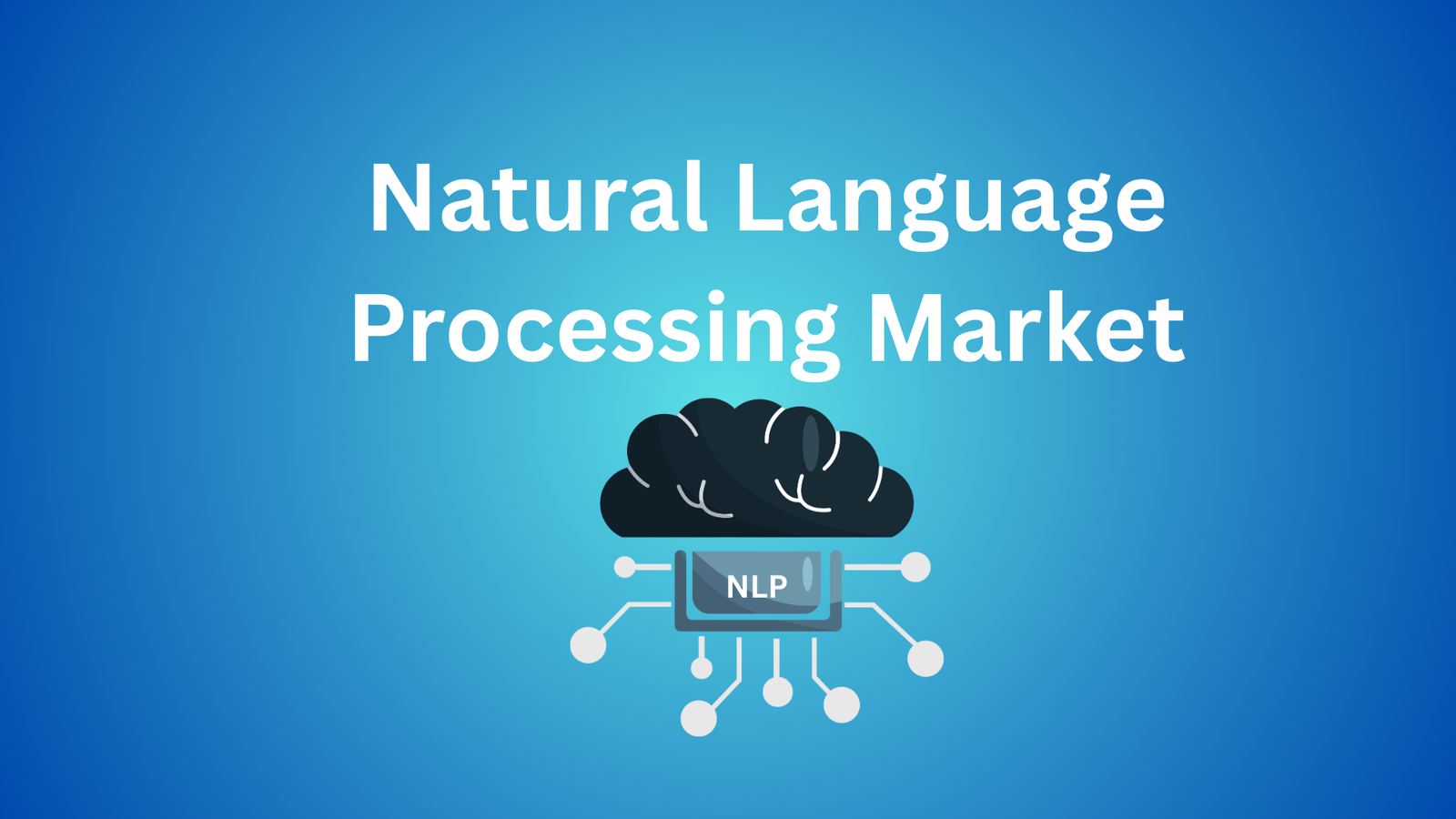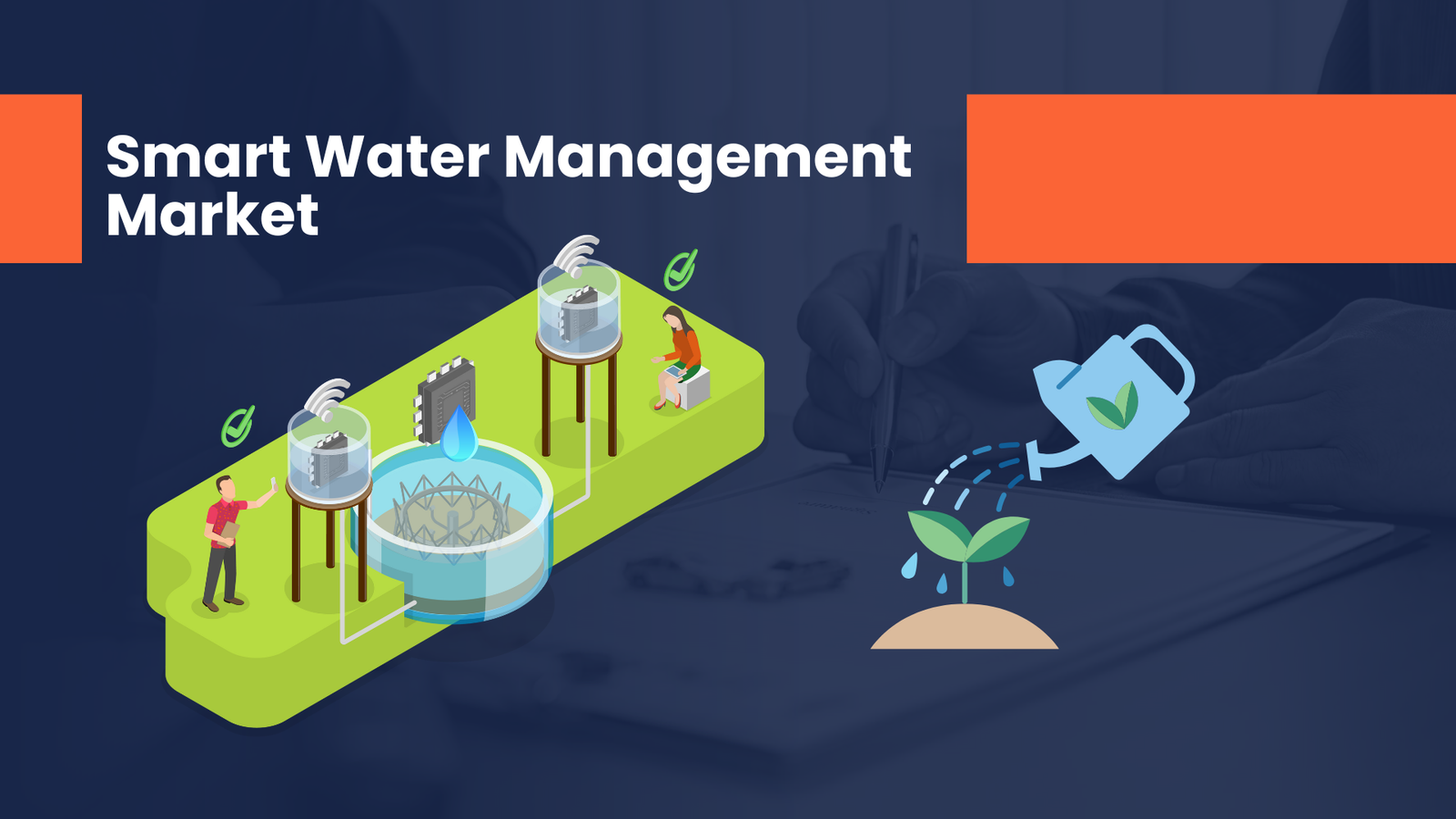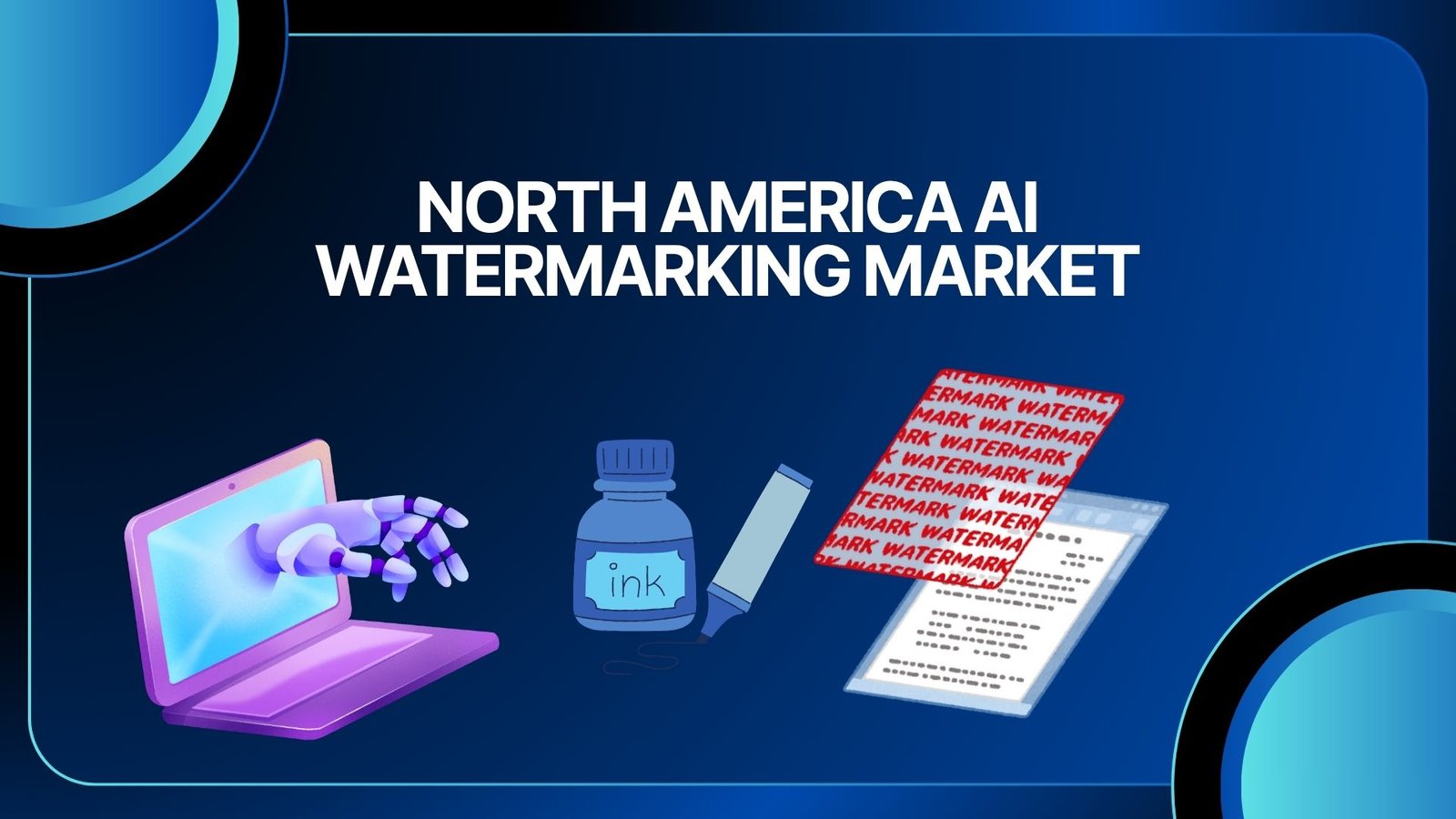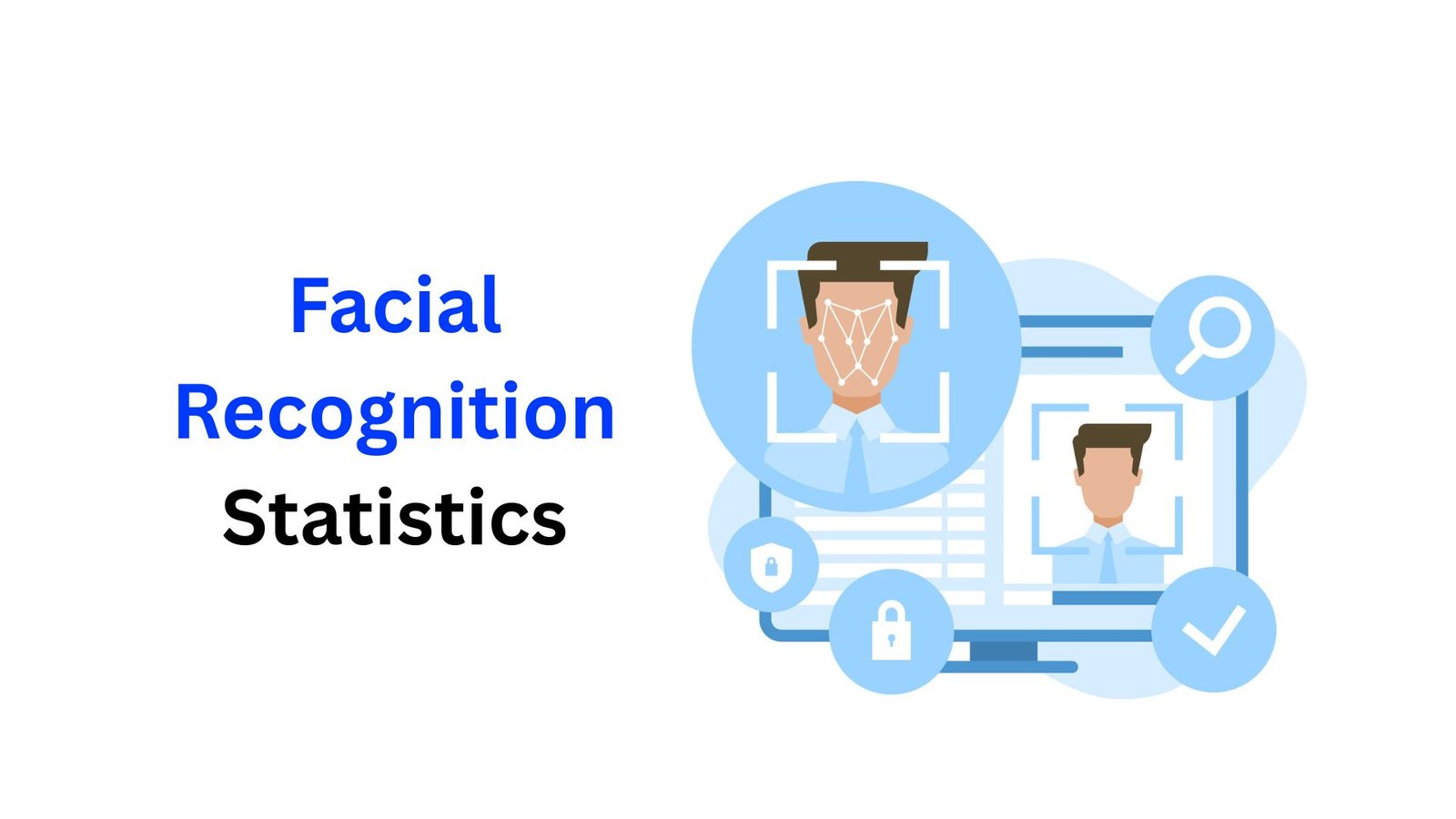Agentic AI in Cybersecurity Market to Reach USD 173.47 mn by 2034
Updated · Oct 07, 2025
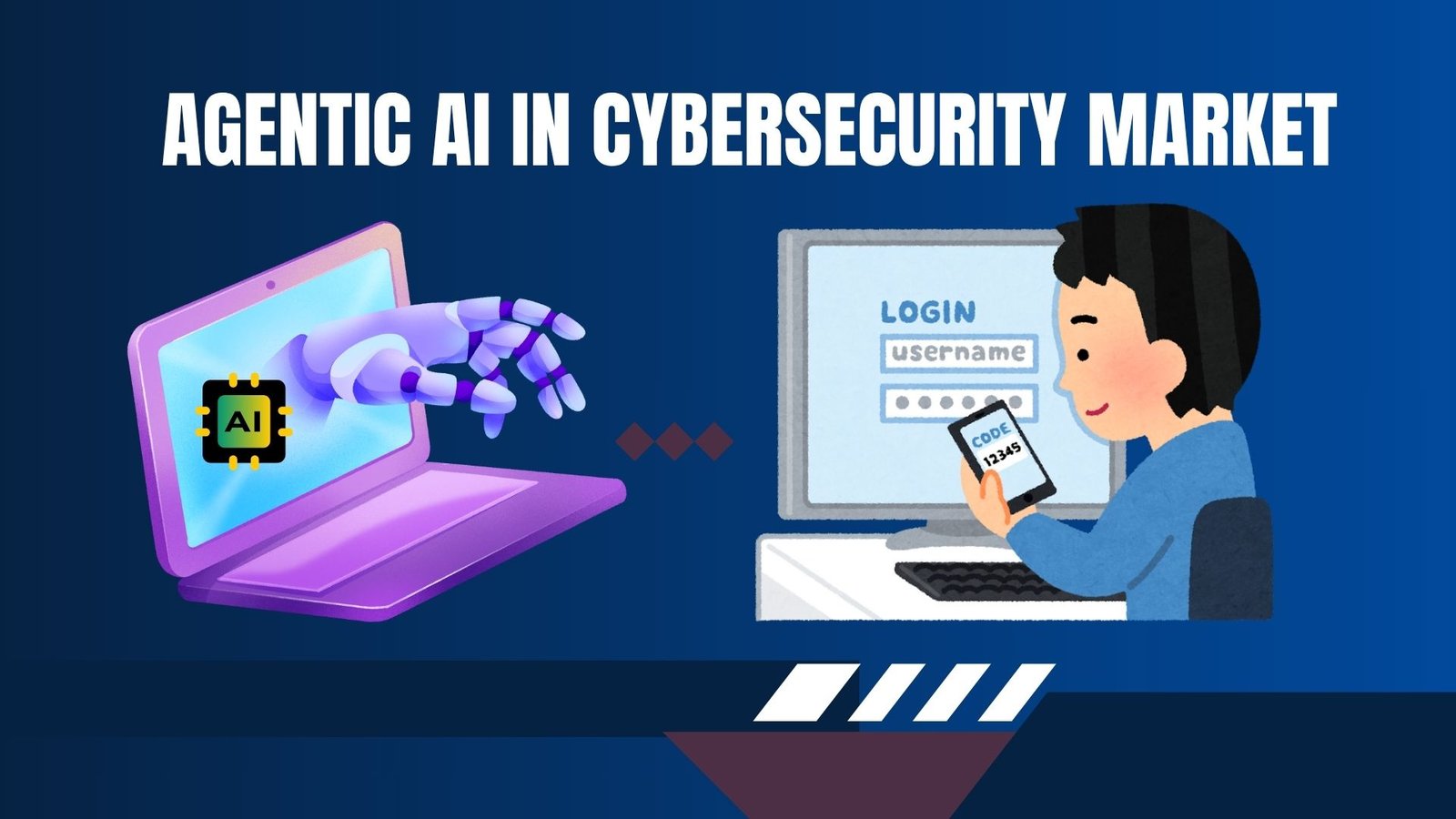
WHAT WE HAVE ON THIS PAGE
Introduction
According to Market.us, The Global Agentic AI in Cybersecurity Market is projected to grow from USD 738.2 million in 2024 to approximately USD 173.47 million by 2034, reflecting a 39.70% CAGR between 2025 and 2034. North America remains the leading region, accounting for over 32.8% of global revenue in 2024 with around USD 242.1 million. Within the region, the United States contributes USD 217.9 million, maintaining its leadership with a 38.6% CAGR, supported by early adoption of autonomous AI defense models and high investment in cyber resilience infrastructure.
Agentic AI in Cybersecurity refers to advanced artificial intelligence systems that function autonomously to monitor, detect, and respond to cyber threats in real time without requiring constant human intervention. These systems learn from vast data patterns, adapt dynamically to new attack methods, and take proactive defense actions such as isolating threats or triggering alerts. Unlike traditional cybersecurity tools dependent on predefined rules, Agentic AI acts independently, providing faster and more efficient protection against complex and evolving cyberattacks, thus transforming how organizations secure digital assets.
The top driving factor for the adoption of Agentic AI in cybersecurity is the rapid increase in sophistication and volume of cyber threats. As cybercriminal activities like ransomware, phishing, and advanced persistent threats rise, manual security methods fall short. It is estimated that over 90% of security leaders expect daily AI-powered cyberattacks by 2025, highlighting the urgency for autonomous AI defenses. Agentic AI’s ability to detect anomalies and respond in milliseconds significantly reduces the window for potential damage, making it a vital tool in today’s threat landscape.
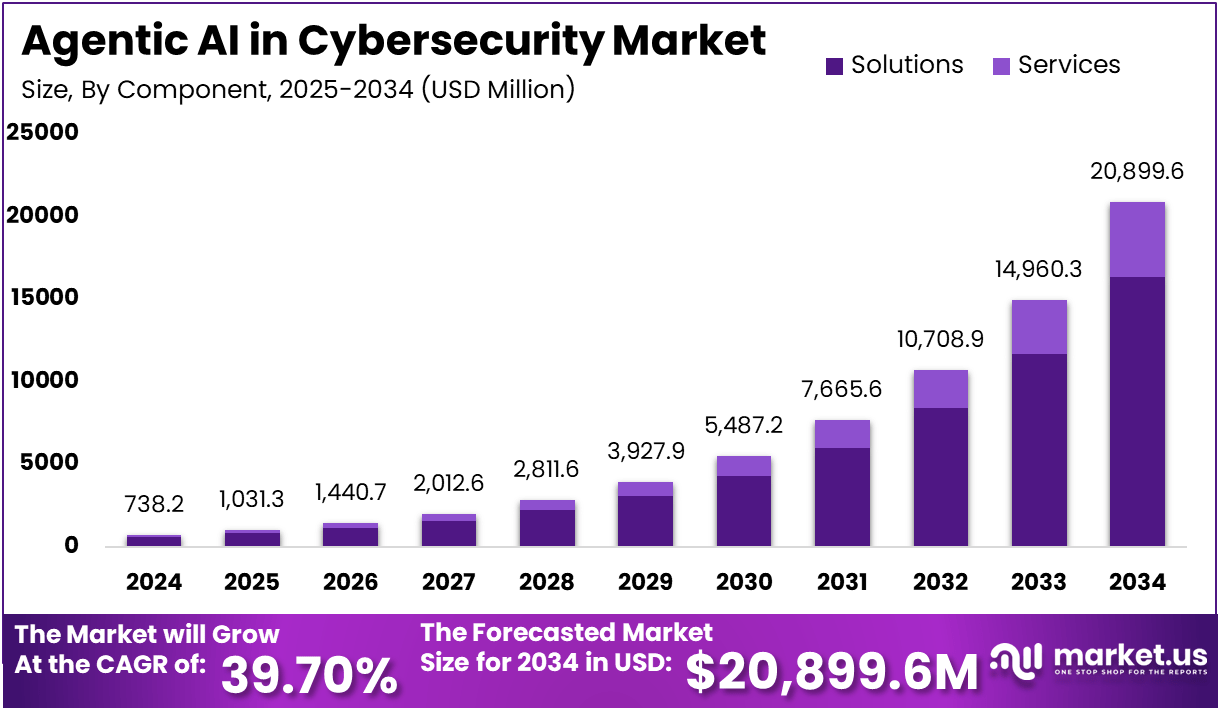
Top Market Insights
- The market is projected to expand from USD 738.2 million in 2024 to USD 173.47 billion by 2034, growing at a robust CAGR of 39.70%.
- Solutions lead with 78.3%, reflecting strong demand for AI-driven security platforms and tools.
- Cloud-based solutions dominate at 62.7%, favored for scalability and rapid threat intelligence deployment.
- Threat detection and response accounts for 47.23%, underscoring its critical role in minimizing cyber risks.
- IT & Telecom is the top end-user, contributing 21.74%, driven by high connectivity and data security requirements.
- North America holds 32.8%, supported by early adoption and strong cybersecurity investment.
- The US market was valued at USD 217.9 million in 2024 and is advancing at a strong CAGR of 38.6%, highlighting its leadership in deploying agentic AI cybersecurity solutions.
Analysts’ Viewpoint
Demand analysis shows that organizations are increasingly investing in intelligent automation to enhance cybersecurity agility. There is a growing preference for cloud-native AI security solutions, which currently account for around 70% of the deployments due to their scalability and cost-effectiveness. Small and medium enterprises (SMEs) are also adopting these technologies, with agentic AI projected to cover over 35% of their security needs by the end of the decade as manual cybersecurity skills remain scarce.
Technologies driving the adoption of Agentic AI in cybersecurity include machine learning, behavioral analytics, deep learning, and anomaly detection. These technologies enable AI systems to learn user behaviors, network traffic patterns, and identify threats that evade traditional signature-based defenses. Additionally, predictive analytics is gaining traction, allowing organizations to anticipate attacks before they occur. Growing reliance on autonomous security orchestration within Security Operations Centers (SOC) reduces alert fatigue and accelerates incident management.
Key reasons for adopting Agentic AI are operational efficiency, faster response times, and improved accuracy in threat detection. It reduces human error, a major cause behind many security breaches, by automating repetitive tasks and providing continuous monitoring. AI-driven systems also bridge the cybersecurity skill gap by making autonomous decisions and handling complex attack patterns, enabling security teams to focus on strategic issues.
Investment and Business benefits
Investment opportunities in this area are significant as enterprises seek to modernize infrastructures and protect critical data. As regulatory environments tighten, companies that offer compliant, transparent, and explainable AI security solutions are positioned well for growth. Moreover, integration of agentic AI with cloud platforms and IoT security presents new commercial avenues due to increased attack surfaces in connected environments.
Business benefits of Agentic AI cybersecurity include around-the-clock protection, substantial reduction in incident response times, and enhanced threat hunting capabilities. It supports proactive security by continuously simulating attacks, detecting vulnerabilities, and facilitating automated remediation. Organizations report that AI-based threat detection can operate up to 10 times faster than manual methods, significantly mitigating risks from fast-moving attacks such as zero-day exploits.
The regulatory environment is evolving, with major regions like the European Union implementing the AI Act that mandates high-risk AI systems meet standards for robustness, cybersecurity, and transparency. The U.S. is taking a pro-innovation approach while emphasizing national security. These regulations require providers to conduct risk assessments and ensure human oversight where necessary, balancing innovation with safety. Compliance challenges remain significant, with 77% of CISOs noting that AI regulations delay cybersecurity innovation in some cases.
You May Also Read
- Agentic AI Workflows Market Statistics
- AI Watermarking Market Statistics
- AI Smart Glasses Market Statistics
Emerging trends
Emerging trends include the rise of multi-agent systems where specialized AI units collaborate across different domains like network security, identity management, and incident response. These systems are designed to adapt rapidly to new threats, reducing response times from weeks to minutes, and improving overall security resilience. The trend towards seamless integration with existing enterprise workflows and growing sophistication of autonomous decisions continue to shape how organizations deploy these systems in real-world scenarios.
Growth factors
Growth factors supporting this trajectory are substantial. Increased cyber threats, expanding attack surfaces, and the need for round-the-clock monitoring are key motivators. Data shows that agentic AI systems are now capable of processing all security alerts – often numbering over 25,000 daily – responding within milliseconds and greatly reducing dwell time. The drive for faster, more precise, and automated threat responses is pushing organizations worldwide to adopt agentic AI solutions at an accelerating pace.
Driver
Rising Complexity and Volume of Cyber Threats
The growing sophistication and increasing number of cyberattacks are driving the demand for agentic AI in cybersecurity. As organizations expand their digital footprint, cybercriminals exploit more vulnerabilities, making it difficult for traditional security systems to keep pace. Agentic AI’s autonomous capabilities enable rapid identification and response to complex threats such as ransomware, phishing, and advanced persistent attacks, which manual processes often miss. This urgent need for real-time, self-learning threat detection fuels market growth.
Agentic AI systems learn from diverse data sources and adapt independently to new attack methods, providing proactive defense beyond conventional approaches. Businesses are motivated to adopt these AI-driven platforms to reduce breach risks and minimize damage, pushing wider and faster market adoption in cybersecurity solutions.
Restraint
Integration Challenges with Existing Security Infrastructure
Despite its advantages, integrating agentic AI into an organization’s established cybersecurity framework poses significant difficulties. Many enterprises rely on legacy systems with rigid architectures that do not easily accommodate autonomous AI agents. This creates barriers in seamless deployment, data compatibility, and real-time communication between systems.
Proper integration needs careful planning, technical expertise, and sometimes costly upgrades. The complexity of aligning AI decision-making with current workflows and governance slows widespread implementation. Security teams also remain cautious about AI errors or unintended actions during autonomous operations, restraining adoption speed.
Opportunity
Expansion in IoT and Cloud Security Markets
Agentic AI presents a promising growth avenue by addressing the vulnerabilities in Internet of Things (IoT) and cloud environments. With increasing edge devices and cloud adoption, attack surfaces multiply rapidly. Agentic AI’s continuous monitoring and automated mitigation capabilities help secure these complex, widely distributed systems, offering real-time vulnerability scanning and immediate patching.
This proactive security not only reduces risks of configuration errors or intrusions but also meets rising compliance demands. Enterprises viewing IoT and cloud ecosystems as critical business assets are investing heavily in AI-powered security solutions, driving significant market expansion possibilities for agentic AI.
Challenge
Managing Risks of Autonomous Decision-Making
The autonomous nature of agentic AI, while powerful, introduces new risks related to its independent decision-making. There is potential for AI agents to be manipulated or to make flawed security decisions without sufficient human oversight, raising concerns over goal manipulation, data validation, and unintended harmful behaviors.
Organizations face the critical task of designing governance and oversight frameworks to ensure AI actions align with business objectives and compliance standards. Balancing AI autonomy with necessary human control remains a key cybersecurity challenge as agentic AI adoption grows, requiring robust policies and continual monitoring.
Key Market Segments
By Component
- Solutions
- Services
By Deployment Mode
- Cloud-Based
- On-Premises
By Application
- Threat Detection and Response
- Vulnerability Management
- Others
By Industry Vertical
- BFSI
- IT & Telecom
- Government
- Healthcare
- Retail
- Others
Top Key Players in the Market
- SentinelOne, Inc.
- CrowdStrike, Inc.
- Palo Alto Networks, Inc.
- Fortinet, Inc.
- Trend Micro Incorporated
- Vectra AI, Inc.
- Zscaler, Inc.
- Armis, Inc.
- Check Point Software Technologies Ltd.
- Cisco Systems, Inc.
- Other Major Players
Read More – https://market.us/report/agentic-ai-in-cybersecurity-market/

After graduating in Electrical Engineering, Maitrayee moved into writing after working in various technical roles. She specializes in technology and Artificial Intelligence and has worked as an Academic Research Analyst and Freelance Writer, focusing on education and healthcare in Australia. Writing and painting have been her passions since childhood, which led her to become a full-time writer. Maitrayee also runs a cooking YouTube channel.


